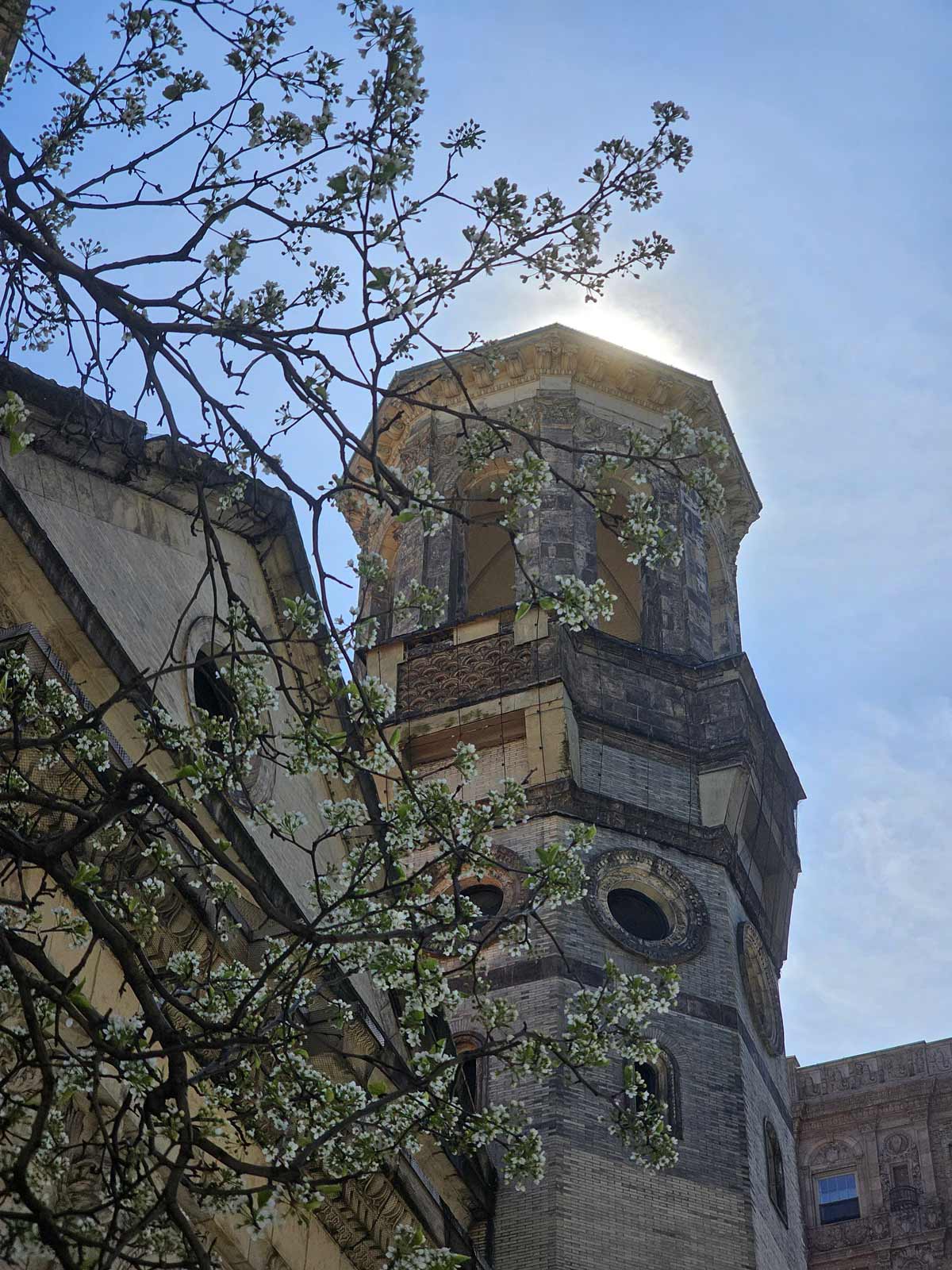Our Building
Throughout its dynamic history, relationships with space users and building partners have enriched St. Paul & St. Andrew, a NYC Manhattan Church, both spiritually and architecturally.
Though the congregation’s roots can be traced back to the founding of the Second Wesleyan Chapel on Mulberry Street between Houston and Bleecker in 1834, the notable Upper West Side building that houses St. Paul & St. Andrew today was constructed in the late 1800’s for the congregation of St. Paul, to the consternation of the existing neighborhood congregation of St. Andrew, which was located on 76th St. between Columbus and Amsterdam Avenues. In December 1937, the congregations of St. Paul and St. Andrew merged to become St. Paul & St. Andrew Church, retaining the current 86th St. building as their home.
The journey to the building’s completion began in May, 1894 when its site at 86th and West End Avenue was purchased. Designed in a style dubbed “scientific eclecticism” by architect Robert H. Robertson, it was finally completed and dedicated on October 3, 1897. The total cost of construction at the time, including the land, was $343,673.52. Over the years, the physical structure had changed many times: the stained glass window, "Paul Before Agrippa," was unveiled in 1903 (restored in 2024), the sanctuary was remodeled in 1917, and then redesigned extensively in 1938 in honor of the 1937 merger with St. Andrew’s.


More About our NYC Manhattan Church Building
Many design changes corresponded to the evolving relationship between pastor and parishioners. In 1937, the sanctuary’s original platform with central pulpit and a raised gallery for organ and choir were removed, replaced by a central altar, with the pulpit and lectern in the sides and choir stalls behind. That year, the organ was re-installed, as well. Later, front pews were removed and by the late 1980s, sermons were preached from in front of the chancel rail, to bring the word closer to the people.
There was a major exterior renovation in 1968, but by 1975, the congregation debated which option for the structure would best serve St. Paul & St. Andrew's future ministry. That led to a vote to demolish in 1979. But with the designation of the church building as a city landmark in 1981, the Church began another odyssey, eventually becoming the first congregation to petition the U.S. Supreme Court to ban landmarking of houses of worship as an infringement of First Amendment religious freedom protections. (The Court declined to hear the case.)
In late 1990, St. Paul & St. Andrew began talking with Congregation B’nai Jeshurun, on West 88th Street, about joint programming; after B’nai Jeshurun’s roof fell in, the two congregations began sharing St. Paul & St. Andrew’s sanctuary, starting in August 1991. Today, the synagogue still holds High Holiday services and other events at the church. In recent years, the church has also shared space at various times with the Ethiopian Evangelical Church, Iglesia Cristo Vivo, Rivers of Living Water and Broadway United Church of Christ, among others. These relationships have enriched St. Paul & St. Andrew in Manhattan NYC both spiritually and architecturally, as the banner that now greets all who worship in the sanctuary says: "How good it is when brothers and sisters dwell together in harmony."
The 1990’s also saw a major renovation of the ‘West End Theatre’ on the second floor, which increased the church’s support of the performing arts. The Theatre has launched various productions, including Bubbling Brown Sugar (1975) which went to Broadway, and The Laramie Project (2000).
In this century, major efforts have been made to renovate the aging building and transform it into a community asset through various outreach activities and serving as a hub for not-for-profit programming space.
These efforts include a gut-rehab of the lower level (2004-5) and a renovation of the steps and sidewalk (2014-15). During the Covid-19 pandemic, while the church rapidly pivoted to online worship and small group meetings, the sanctuary famously became a vast, temporary food warehouse to support the huge expansion of emergency food distribution through the West Side Campaign Against Hunger. Necessary repairs to the sanctuary following the pandemic yielded dividends in the form of increased suitability for concerts, including an ongoing partnership with Carnegie Hall.
Today, a comprehensive repair and restoration project, which began with a symbolic restoration of the building’s 121 year-old “Paul Before Agrippa” window, is underway. Our restoration efforts have been bolstered by our selection as a National Fund for Sacred Places awardee in 2023! You can learn more about our preservation efforts and make a financial contribution to our preservation campaign here.

